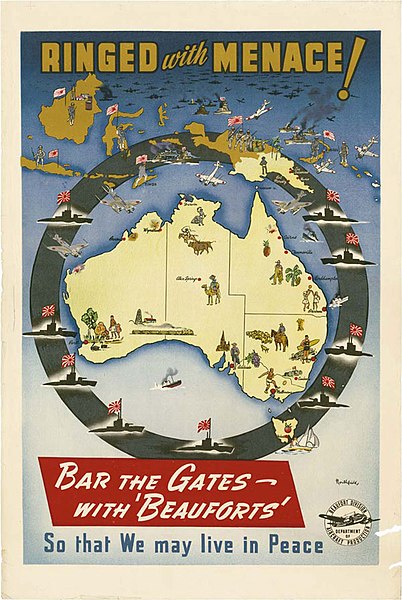The Bristol Beaufort is a British twin-engined torpedo bomber designed by the Bristol Aeroplane Company, and developed from experience gained designing and building the earlier Blenheim light bomber. At least 1,180 Beauforts were built by Bristol and other British manufacturers.
Bristol Beaufort
Beaufort first prototype L4441, at a display of new and prototype aircraft, RAF Northolt May 1939. Charles E Brown photograph.
A new late-production Beaufort Mk.II at the Filton factory. ASV yagi aerials are under the nose and wings and the new DF loop is fitted. Muzzles of additional Vickers GO are visible in the front upper nose.
Propaganda poster urging Australians to "bar the gates with Beauforts" against Japanese invasion.
A torpedo bomber is a military aircraft designed primarily to attack ships with aerial torpedoes. Torpedo bombers came into existence just before the First World War almost as soon as aircraft were built that were capable of carrying the weight of a torpedo, and remained an important aircraft type until they were rendered obsolete by anti-ship missiles. They were an important element in many famous Second World War battles, notably the British attack at Taranto, the sinking of the German battleship Bismarck, the sinking of the British battleship HMS Prince Of Wales and the British battlecruiser HMS Repulse and the Japanese attack on Pearl Harbor.
A Fairey Swordfish carrying a dummy torpedo
A formation of Fairey Barracudas during World War II
Short Folder 81 being hoisted aboard the cruiser HMS Hermes
A Sopwith Cuckoo dropping an aerial torpedo during World War I








